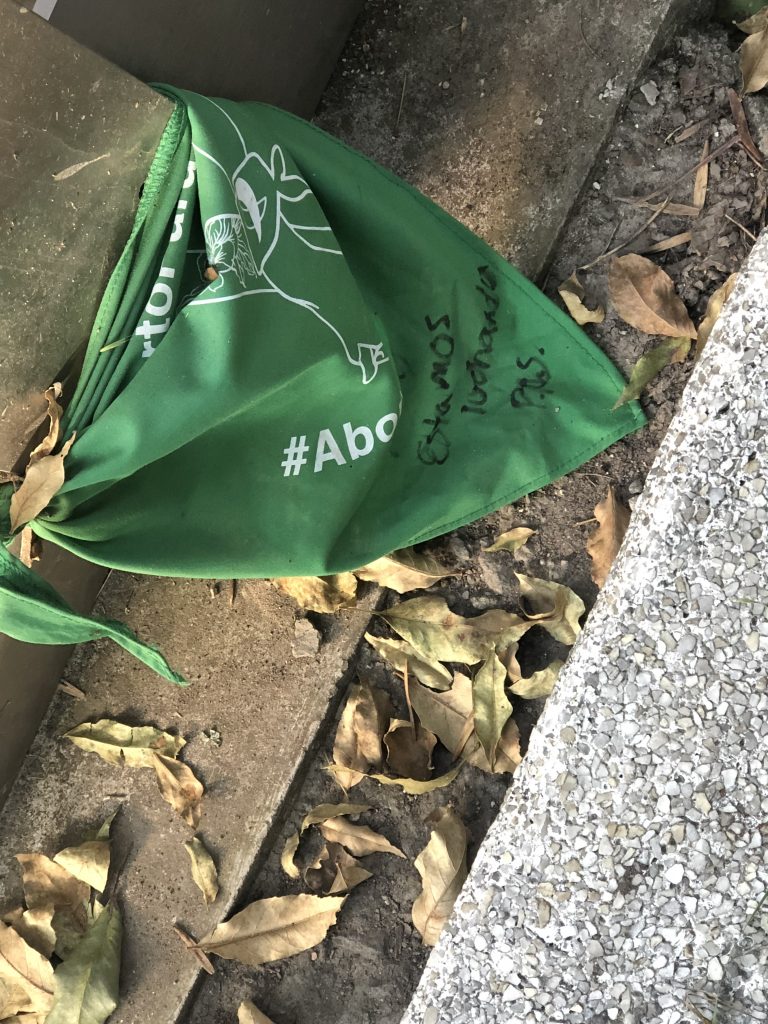
por Erika Cortés
La visualización de datos es una herramienta muy útil como apoyo de investigaciones de enfoque cualitativo.
Se abordará la evolución de la visualización de datos utilizada como recurso en dos proyectos.
1. Objeto manifiesto. Estudio del diseño y la protesta, de pañuelos a feminismos. Proyecto de investigación de la Mtra. Lucy Atri.
‘Radar del sentido’ permitió materializar las reflexiones y comentarios comentados en la entrevista semi-estructurada de los Focus Groups. Particularmente en este caso, la herramienta de visualización permitió consolidar el Focus Group de manera remota, dando el espacio para interacciones entre las participantes. En cierta medida, los ‘Radares del Sentido’ son una mirada concreta, honesta y consensuada del significado de los Pañuelos. En ellos, podemos ver los elementos que los componen y cómo (a partir de su proximidad) se relacionan y articulan entre sí. Podríamos decir que los Radares del Sentido promueven el reconocimiento de los saberes de las participantes durante las entrevistas.
El objetivo de la herramienta fue desjerarquizar el diálogo entre participantes y facilitadoras/investigadoras, además de reducir el sesgo durante la interpretación de datos, dado que el mapeo fue generado por las mismas participantes e identificar los puntos de intersección entre movimientos sociales.
En esta propuesta se hace evidente el uso de la visualización particularmente en dos momentos: como herramienta de indagación y como herramienta para análisis.
2. ¿Has visualizado tus sentires? Visualización análoga de datos.
En el marco de la conmemoración del 25N Día Internacional de la no violencia contra las mujeres y a partir de la iniciativa denominada 16 días de ARTIVISMOS.
Erika Cortés y Miriam Martínez, docentes de la Escuela de Diseño proponen la pieza ¿has visualizado tus sentires? que consiste en un ejercicio de participación de las mujeres de la comunidad del EDINBAL, entendiendo la participación desde la propuesta de Henry Sanoff que enfatiza que lo importante para los actores involucrados es sentirse escuchados.
Se propuso un ejercicio de visualización análoga de datos para el abordaje de una problemática compleja que aqueja a una comunidad conformada por estudiantes de niveles de licenciatura y maestría, personal docente y administrativo.
Tres fueron los ejes para la creación de la propuesta:
a. visibilizar la complejidad de las violencias, bajo la mirada de la interseccionalidad b. la deconstrucción de una problemática compleja
c. su abordaje desde las pequeñas acciones
Erika Cortés
Erika Cortés es profesora de la UNAM Universidad Nacional Autónoma de México, en el Posgrado Diseño Industrial, con interés en la multimodalidad arquitectónica, el lenguaje inclusivo y la ética en el diseño.
Leave a Reply